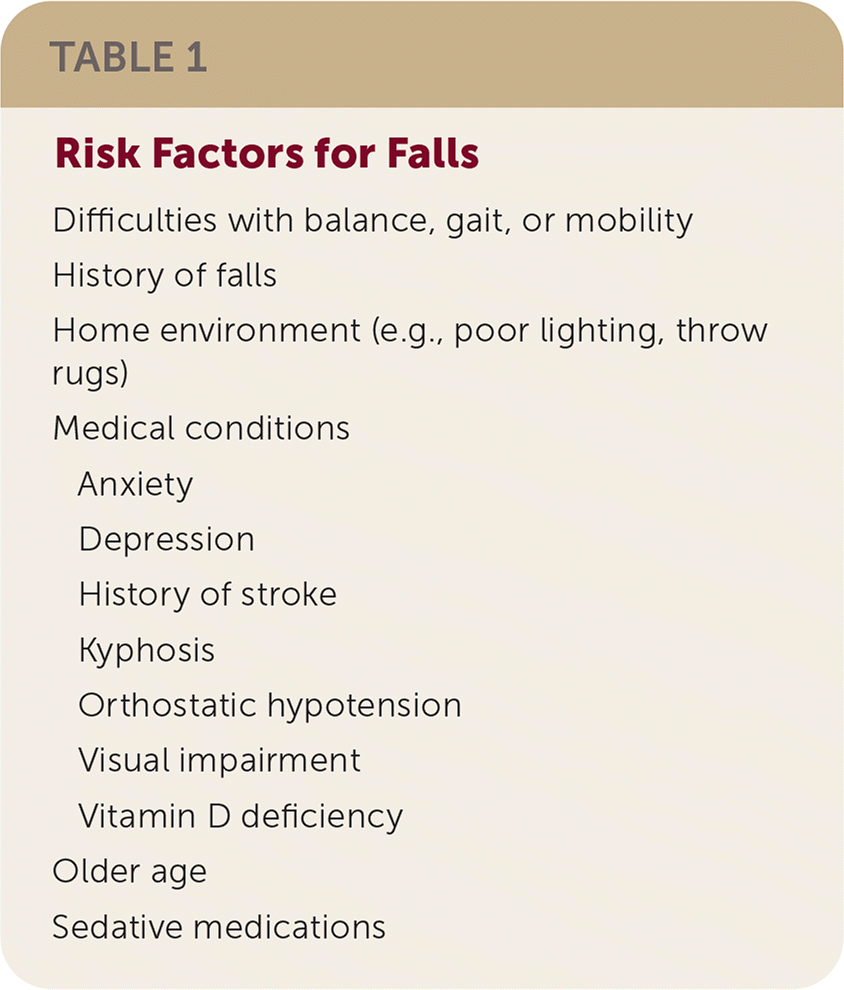
Am Fam Physician. 2022;106(5):587-588
Author disclosure: No relevant financial relationships.
Key Points for Practice
• Routine exercise, including aerobic and resistance activities, helps prevent bone loss; exercise also helps prevent falls in older adults.
• Calcium and vitamin D supplementation has not been shown to reduce fracture risk.
• Bone density screening is recommended for all postmenopausal patients 65 years and older. Younger patients with an estimated fracture risk of greater than 8.4% also benefit from screening.
From the AFP Editors
Osteoporosis is common in women, and one-half of women will experience an osteoporotic fracture in their lifetime. Important considerations to prevent osteoporotic fracture include exercise, fall risk assessment, and screening with bone density testing. The American College of Obstetricians and Gynecologists (ACOG) has new recommendations about screening for and diagnosis of osteoporosis.
Health Inequities in Osteoporosis
Screening, testing, and treatment of osteoporosis are all affected by health inequity. Black women are less likely to be screened than other racial groups and less likely than White women to be treated for osteoporosis. Hispanic and Black women are 60% less likely to receive bone density testing after a hip fracture, and nearly 10% fewer Black women receive treatment for osteoporosis than White women. These disparities offset the effect of higher prevalence of osteoporosis in White women.
Osteoporosis Prevention
Exercise helps prevent bone loss and is an important consideration in osteoporosis prevention counseling. Resistance and high-impact or weight-bearing exercises are most effective and are safe in patients with osteopenia. A walking regimen also may be helpful.
The National Academy of Medicine recommends 600 IU daily of vitamin D from food in patients up to 70 years of age and 800 IU in those older than 70 years. For calcium, they recommend 1,000 mg daily for adults up to 50 years of age, increasing to 1,200 mg daily for those older than 50 years.
Because supplements do not reduce fractures, the U.S. Preventive Services Task Force (USPSTF) recommends against supplementing with 1,000 mg calcium and 400 IU vitamin D in postmenopausal women. The evidence is insufficient for larger doses and supplementation in premenopausal women.
Fall Prevention
Fractures in patients with osteoporosis often occur related to falls, and certain risk factors make falls more likely (Table 1). Multifactorial interventions, including referral to physical or occupational therapy, cognitive behavior therapy, and nutrition therapy, may be the most helpful for patients with risk factors. Exercise interventions reduce falls, and injurious falls, in older adults. ACOG follows the USPSTF and recommends exercise interventions for community-dwelling adults 65 years or older who are at increased risk of falls.

| Difficulties with balance, gait, or mobility |
| History of falls |
| Home environment (e.g., poor lighting, throw rugs) |
| Medical conditions |
| Anxiety |
| Depression |
| History of stroke |
| Kyphosis |
| Orthostatic hypotension |
| Visual impairment |
| Vitamin D deficiency |
| Older age |
| Sedative medications |
Osteoporosis Screening
Bone density screening is recommended in postmenopausal patients 65 years and older to decrease fractures. For younger patients with at least one risk factor, screening is recommended if the fracture risk is greater than 8.4% using the Fracture Risk Assessment Tool (https://www.sheffield.ac.uk/FRAX/tool.aspx?country=9). Risk factors include alcohol use (more than three drinks per day); body mass index less than 20 kg per m2 or weight less than 127 lb (57.6 kg); parental history of hip or spine fracture; smoking; secondary bone loss from medical conditions (i.e., anorexia nervosa, diabetes mellitus types 1 and 2, diminished ovarian reserve or primary ovarian insufficiency, gastric bypass, HIV, hyperparathyroidism, hypocalcemia, premature menopause, renal impairment, rheumatoid arthritis, Turner syndrome, vitamin D deficiency) or medications (i.e., antiepileptics, antiretrovirals, aromatase inhibitors, chemotherapy, depot medroxyprogesterone acetate, glucocorticoids, gonadotropin-releasing hormone agonists or antagonists, heparin). Bone density measurements are most accurate in the hip and lumbar spine.
Loss of height may demonstrate an asymptomatic vertebral fracture and could indicate an increased risk for nonvertebral fracture. A height loss of 2 cm within three years or 4 cm from early adult height should prompt vertebral imaging. A height loss of 5 cm raises the risk of hip and nonspine fractures by 60% independent of bone density or vertebral fracture risk.
Repeat screening after normal bone density testing is uncertain. Although the USPSTF does not discuss repeat screening and limited evidence suggests no benefit from rescreening earlier than four to eight years after a normal test, ACOG recommends repeat testing no earlier than two years after initial screening in those with a borderline result or a change in risk factors. A one-year follow-up test is recommended for patients on chronic glucocorticoid treatment.
Diagnosis
Osteoporosis is diagnosed in a patient with any of the following:
T-score of −2.5 or less for hip, lumbar spine, femoral neck, or distal third of radius
History of fragility fracture, including incidental or asymptomatic vertebral fracture
T-score between −1.0 and −2.5 and increased risk of fracture determined by risk assessment tool
Guideline source: American College of Obstetricians and Gynecologists
Evidence rating system used? Yes
Systematic literature search described? Yes
Guideline developed by participants without relevant financial ties to industry? Not reported
Recommendations based on patient-oriented outcomes? Yes
Published source: Obstet Gynecol. September 2021;138(3):494–506.

